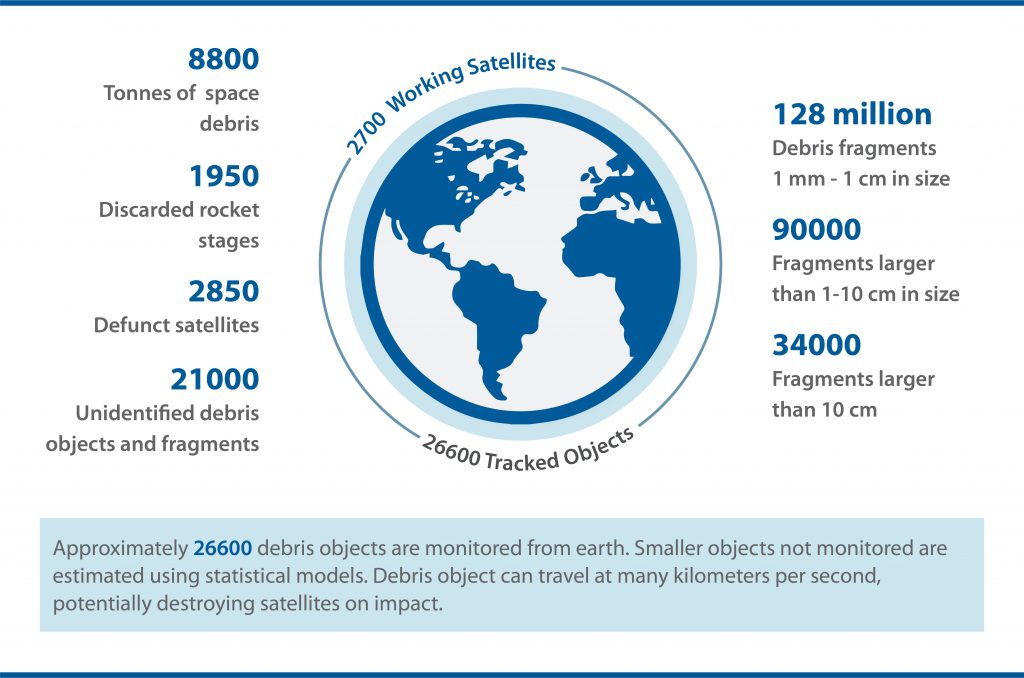Introduction
A central feature of modern military operations is the necessity of coordinating operations across air, land, sea, cyberspace, and space. Command and control across multiple domains is no simple thing, and the easy-to-see control centers and their products are just the ‘tip of the iceberg’ (Lyle, 2014). Especially at the operational level, where operations are planned and coordinated, there is a requirement for field-grade officers who are specialists both in their specific domain and who know how to translate insights and concerns between domains. This is especially true for the space domain.
Field-grade specialists do not self-generate. A system must be created to develop that expertise (Spirtas, Young, and Zimmerman, 2009; Lyle, 2014; Caitlin Lee et al., 2021). While the United States and China have created dedicated space forces, it has been a common trajectory to grow space expertise from within air forces. Most nations continue to associate their air and space forces. Space expertise could come from other domains, but very often, it does not, and even if provided, might not readily fit into air power tasking and targeting processes. Therefore, cultivating a cadre of space specialists that can support multi-domain operations still often falls to air force leaders.
Air force leaders must open career paths that value the creation of such field-grade space domain experts. This has proven culturally difficult, even in leading air forces (505CCW/PA, 2022), where insufficient paths are open at squadron command to operational planners, designers, and strategists outside their tactical family of origin. This paper begins by exploring the unique characteristics of military domains, in particular space, and its value in executing multi-domain operations as a make-or-break enabler. The discussion then explores various considerations for air forces relating to getting its people trained to exploit space enablers for multi-domain operations and preparing for future contested environments where space power must be projected into the air domain and vice versa.
What’s in a Domain?
While ‘domain’ is a commonly used term, there is no agreement on its definition (Erik Heftye, 2017; Donnelly and Farley, 2018). When we speak of a military domain, we mean a place or medium that is governed by specific factors that constrain the physics of movement and communication (Garretson, 2017). A dominant form of movement and communications determines the form of the platforms and weapons and the types of formations and coordination which is effective. On land, these relate to wheeled and tracked vehicles and infantry. On the ocean, buoyancy allows heavy ships and undersea submersible platforms. In the air, the need to minimize weight and maintain lift results in aircraft. In space, the absence of air or meaningful friction, and the high speeds required to attain orbit, result in light spacecraft in constellations with nearly uninterrupted range for communications.
Each military operations domain requires specialized equipment with specialized training to operate and maintain it and the specialized training and understanding for its employment in warfare. Each military domain has its unique tempo, strengths, and weaknesses. Because of the need to train specialists in each domain, it is natural to think symmetrically. For example, it is natural for airmen to worry about other aircraft. It is less natural for airmen to think about cyberspace vulnerabilities, missile strikes from navies, or a special operations raid on an airfield. Military services often ignore their sister services’ (and opponent sister services’) operational problems, concepts, acquisitions, and budgets. But in modern operations, a failure to consider such vulnerabilities and opportunities is likely to prove costly indeed.
While it is still good practice to stick with physical domains to promote specialization, there is still a cost. It is necessary to build the expertise that can bridge and think across the operational domains (Lyle, 2019). This is especially true because certain domains, for example, land and sea, have already become dependent upon air superiority and space enablers to enable maneuver and communications —dependencies and vulnerabilities that are often inadequately understood. One remedy for this is the development of military doctrines which emphasize the need to think cross-domain or multi-domain at the operational level. Such doctrines are essential, but they must be complemented by specialists who can actually think across domains.
Military services often ignore their sister services’ (and opponent sister services’) operational problems, concepts, acquisitions, and budgets. But in modern operations, a failure to consider such vulnerabilities and opportunities is likely to prove costly indeed.
Peter Garretson
Multi-Domain Operations
What does it mean to think cross-domain, in general? Why is space of particular consideration? To think cross-domain is to put asymmetry and adjacency at the forefront of the planning discipline. It is to begin by asking the question of how adjacent domains affect the military objective, the main thrust of operations, and one’s own centers of power and critical enablers.
It is to wonder: How could land forces support air forces? How could land forces deny air forces? How could air forces support land forces? How could air forces deny land forces? And so on for naval, cyberspace, and space forces.
More often than not, such a mindset must be trained. But what exactly is the skillset that air force leaders need to cultivate? To answer that, we need to take a closer look at the problem set we face concerning multi-domain operations (MDO). When it comes to joint operations, there is usually strong advocacy from the air forces, navies, and armies to articulate their proposals and concerns on planning staffs. At least to some extent, there are developed career paths to build domain expertise in air, land, and sea.
The key to joint effectiveness is, however, “How do I usefully contribute insights and capabilities from my domain into joint plans and processes?”. Results here are often suboptimal because of the silo effect of training and the requirement for service advocacy in the semi-anarchic planning process, where there is still a perceived need for an unbiased referee representing the true joint design element (Demarest, 2022; Gill, 2022). Such expertise and advocacy are far less developed and available for space because militaries have many decades more experience conducting military operations in the air and millennia more experience with military operations on land and sea.
Space as a Domain
Increasingly, to secure the success of operations in the other domains, space specialists need a seat at the table in higher headquarters but must be able to understand MDO concepts and language to be equal and meaningful contributors. Space is truly a separate domain, not only a separate legal domain from air (United Nations, 1967) but because it has vastly different maneuver physics. Airmen, at least aircrew, can immediately grasp the utility of altitude and speed. What may not be apparent is how limited maneuver is in space. There is no air to push against, to use for lift or drag or thrust. To change direction, a spacecraft must throw onboard mass in the opposite direction in which it desires to move, which can quickly use up its stored supply of propellant and may also require significant power.
At orbital speeds (greater than Mach 25), spacecraft have such massive forward momentum and kinetic energy that lateral maneuver is challenging. Whereas aircraft must constantly thrust to sustain movement against drag, the lack of drag in space means that a satellite in motion will stay in motion at its speed unless the satellite thrusts. Generally, the primary force that acts upon satellites is gravity, which causes forward momentum to bend around the Earth. Another significant difference is that if two aircraft collide in the air, debris falls to the ground and does not remain in the air to threaten future flights. This is not so in space, where a collision, whether an accident or intended, leaves thousands of fragments traveling at hypersonic speeds that may threaten the safety of other spacecraft and space vehicles. As Figure 6.1 illustrates, space debris is already a significant safety issue and represents a growing global challenge as nations and industry accelerate the deployment of new capabilities in space.

Space as a Make-or-Break Enabler
Only recently has there been a recognition that the enablers of space could hold such significance as to make-or-break military operations. Until recently, only a small number of nations had military or military-relevant satellites. Thus, military requirements for space specialists were small, and, accordingly, career paths have been few. Today, however, the space domain is adjacent to all the military operations domains and has become increasingly relevant to military (and thus multi-domain) operations.
It is essential to understand what precisely the space domain contributes to MDO for militaries today. Space capabilities support a variety of valuable and critical enablers for MDO, enabling broad situational awareness and connectivity across domains. At the most basic level, all terrestrial operations are affected by weather, and space assets provide advance warnings and forecasts of weather conditions. Next, most military operations benefit from overhead imagery, and some require accurate and timely remote sensing. Secure and anti-jam communications require precise timing, and while such capabilities have existed for decades, the proliferation of capabilities to contest communications links has steadily grown, increasing the need for planning and response tactics.

Moreover, all military operations require navigation, and some require the delivery of effects to precise locations. Global Navigation Space Systems (GNSS) provide extremely precise locations given the requisite ground equipment. Finally, all military operations essentially require command and control (C2) and coordination, often between dispersed units, often enough beyond the line of sight, occasionally over-the-horizon or even at global ranges. Here, space capabilities can enable the necessary connectivity, providing one has specialists who know how to acquire it. Some military operations take place under the threat of missile attacks. Space can provide advanced warning of missile attacks and cue terrestrial missile defense systems. Missile warning is perhaps the most demanding of all military space operations because information must be passed in extremely short timelines.
Get Your People Trained
Simple operations in uncontested space may do fine with civilian systems, but optimizing and ensuring the necessary precision at the time of need requires specialists. In the most demanding missions, only a specialist will know where to go to request and receive this imagery or electromagnetic mapping. Making the most of what space has to offer therefore requires specialists that understand whom to call, what to ask for, and how to format information so that it is meaningful to airmen, soldiers, and sailors. This sort of expertise is particularly in need for theater operational planning and execution staffs, including regional combined operations centers, but increasingly essential in national joint staffs, too, especially where plans are made.
Models for this kind of training exist in the U.S. Space Force’s National Security Space Institute (NSSI Public Center, n.d.) and the Army’s FA40 program (Army Space Operations Officer (FA 40), n.d.). Models that seek to provide an even broader view of strategy and operations across domains include the Joint All Domain Strategist (JADS) program at the USAF Air Command and Staff College and the curriculum of the (unfortunately brief) experiment with the USAF 505th that was designed to cultivate Multi-Domain Warfare Officers and all-domain operational planners for air components (Henley, 2021), where a significant emphasis on space was incorporated (Wright, 2019).
Preparing for Counter-Space
However, knowing whom to ask and what to ask for in space may not be enough. All this largely takes for granted that the space assets are present and able to operate unmolested but, increasingly, that may not be true. Air force leaders must decide how many space domain planners must be available for operations centers and train them ahead of time. In smaller air forces where it may be difficult to create and sustain a career field, air force leaders must seek to create pathways for military officers into national space programs or a local commercial space ecosystem and to consider how reservist or part-time expertise can be effectively leveraged. As detailed by various sources (NASIC Public Affairs Office, 2018; Defense Intelligence Agency, 2022), several counterspace systems are being developed, and these developments must be considered as air force leaders weigh up what future space cadre must be prepared for in mind.
Defending Friendly Space Enablers
A multi-domain operational plan that depends on space power may collapse if space assets are vulnerable and undefended. Since a significant number of threats to space systems originate on planet Earth, this may alter the priority of targets. Air power may potentially become the primary counter-space weapon as it can attack the ground segment where transmission, receiving, control, and processing stations are positioned.
Defending Against Unfriendly Space Capabilities
Likewise, a multi-domain operational plan can be foiled by an opponent who can use space systems to gain advanced knowledge of an attack, its strength and is able coordinate responses with secure over-the-horizon communications and precision. Space specialists are therefore needed to understand adversary space systems and key dynamics, such as when they will be in a position to observe.
Cross-Domain Supporting Fires and Aerospace Combined Arms
Airmen should be particularly concerned to ask: How can space forces support air forces? How could space forces deny air forces? How can air forces support space forces? How can air forces deny space forces? These cross-domain problems require education and training in counterspace, and cross-domain counterspace thinking, as well as a basic understanding of orbital dynamics, orders of battle, and adversary weapons systems.
Projecting Space Power into the Air Domain
Air power has excellent range and unmatched speed in power projection, especially with sufficient control of the air to prosecute operations uncontested. Air power is enabled by beyond-line-of-sight sensing and navigation, which enables it to know its destinations and targets, weather, and secure, beyond-line-of-sight communications for C2 and coordination. Air power is protected by early warning of missile attacks, enemy activity, or changes in the electronic order of battle, for example.
Space power can project all these capabilities—beyond-line-of-sight sensing, precision navigation, beyond-line-of-sight communications, and early warning—into the air domain, provided there is proper planning. Air force operations planners must realize that resources such as these may be in high demand, may require prioritization, may need special permissions or access terminals, may have to operate in contested environments, and thus need to ask for these services far in advance of needing them. Reconfiguring a constellation to provide optimal coverage takes time. Getting permission for strategic capabilities takes time. Professional space specialists or liaison officers need to understand what airmen require, when and where they will require it, and think ahead to how to secure and provide such enablers. Providing space enablers in contested environments necessarily requires expertise in defensive counterspace.
Air forces must also ensure their force design pursues the integration of equipment, such as satellite terminals and GNSS receivers. To the extent that force designers desire novel enabling capabilities from space power, they need to provide a clear demand signal to space forces. For example, there is a range of ‘blue sky’ ideas that might directly support air power, such as rocket-cargo delivery (AFRL, n.d.) of mission-capable parts (MICAP), space-based electronic warfare effects (Sands, 2018), space-based target designation (Rogers, 1997), spaceborne data gateways (XVI Satellites, n.d.), or spaceborne tracking of mobile targets (McLain and Dalman, 2018). Niche capabilities such as these cannot be developed without clear demand signals from and to space forces, as well as the understanding of how to articulate and where to give such demand signals. Individuals knowledgeable about air power problem-sets as well as the art of the possible in space power technology and space forces requirement systems are needed.
Space power can also be used to deny or undermine the coherence of enemy air power. Presently space power does not have direct counter-air effects, such as the ability to shoot down aircraft from space, and several physical, technical, fiscal, and political barriers stand in the way of such a capability. However, space power can deny opposing air forces the opportunity to surprise or concentrate force through overhead sensing via electro-optical, radar, and electronic mapping. While highly escalatory and likely to require the highest levels of approval, in principle, friendly counter-space capabilities could deny opposing air forces the ability to see targets in advance, to get advance missile warning before launch, or deny air forces the ability to use satellites for navigating, communicating or exchanging timing signals for their operations.
Projecting Air Power into the Space Domain
Space power relies on a space segment, a ground segment, and a link segment (USSF, 2021). Within the space segment, spacecraft are vulnerable to missile attacks, jamming, cyberspace attacks, and dazzling or blinding by lasers – all of which may, in principle, be delivered by airborne platforms. The link segment, for example, could be exploited or attacked by airborne assets directed at satellites, uplink/downlink stations, or users. Ground segments, such as uplink/downlink facilities, C2 elements, spacecraft tracking facilities, or launch facilities, could also be directly attacked with kinetic air power or from airborne delivery by ground forces.
Ground and air-based adversary anti-satellite capabilities would also be vulnerable to air strikes. Air forces might need to be prepared either to defend friendly ground space support infrastructure or attack the opposing ground-based space support infrastructure. Air forces might need to perform direct counter-space missions or attack enemy air force capabilities being deployed against friendly space systems. But for air power to be effective in such operational scenarios, it needs to participate in planning and understand orders of battle and adversarial space and ground systems. Logically, some specialized capabilities will require custom force design.
Air force leaders must decide how many space domain planners must be available for operations centers and train them ahead of time. In smaller air forces where it may be difficult to create and sustain a career field, air force leaders must seek to create pathways for military officers into national space programs or a local commercial space ecosystem and to consider how reservist or part-time expertise can be effectively leveraged.
Peter Garretson
Conclusion
MDO has become a necessity in modern operations because each military operations domain offers a unique advantage. After all, operations in one domain may be dependent upon supporting operations in another, and threats can emerge from any domain to attack adjacent domains. Space specialists that understand adjacent domains and their interaction and who can translate these effects into their domain are, therefore, imperative in executing MDO.
The space domain increasingly provides the backdrop for situational awareness and the backbone for connectivity to militaries at large and, as such, is the essential connective tissue for MDO. But the advantages that the space domain can unlock do not come for free. Maximizing the ability of the space domain to contribute seamlessly to MDO requires specialist expertise, which must be cultivated ahead of time. Considering the close historical relationship between air and space (where no separate space forces exist for now), that expertise is most likely to be grown in air forces. Such expertise needs to be grown at the operational level, where operational problems in one domain (air, land, sea) can be translated into requirements for another (space) and where operational capabilities and insights from one domain (space) can be translated and disseminated to enable forces in other domains, such as air, land, sea.
Developing such capacity requires both a formal requirement for such expertise, a clear articulation of the required training to develop such expertise, and a promotion pathway, at least to field-grade, as well as some forethought to creating subsequent career paths in industry or civil space and part-time service to assure access to their expertise in the future. The creation of such expertise is against the grain of dominant service culture and will require effort. But those air forces that put in such effort will face fewer nasty surprises and will have at their disposal an asymmetric, cross-domain, combined arms capability which will make them attractive partners and formidable adversaries.
References
505CCW/PA (2022) Air Force graduates final Multi-Domain Warfare Officers, operational planning to be incorp, Air Force Reserve Command.
Available at: https://www.afrc.af.mil/News/Article-Display/Article/3065859/air-force-graduates-final-multi-domain-warfare-officers-operational-planning-to/
AFRL (n.d.) Rocket Cargo For Agile Global Logistics, Air Force Research Laboratory.
Available at: https://afresearchlab.com/technology/successstories/rocket-cargo-for-agile-global-logistics/
Army Space Operations Officer (FA 40) (n.d.).
Available at: https://www.smdc.army.mil/RESOURCES/FA40/
Caitlin Lee et al. (2021) Running the Joint: Air Force Efforts to Build a Joint Task Force Headquarters. RAND Corporation.
Available at: https://doi.org/10.7249/RR-A590-1.
Defense Intelligence Agency (2022) Challenges to Security in Space 2022. Defense Intelligence Agency.
Available at: https://www.dia.mil/Portals/110/Documents/News/Military_Power_Publications/Chall
enges_Security_Space_2022.pdf
Demarest, C. (2022) Pentagon setting up office to speed JADC2 integration across military, C4ISRNet. Available at: https://www.c4isrnet.com/battlefield-tech/it-networks/2022/10/26/pentagon-setting-up-office-to-speed-jadc2-integration-across-military/
Donnelly, J. and Farley, J. (2018) Defining the “Domain” in Multi-Domain, Over the Horizon Journal.
Available at: https://overthehorizonmdos.wpcomstaging.com/2018/09/17/defining-the-domain-in-multi-domain/
Erik Heftye (2017) Multi-Domain Confusion: All Domains Are Not Created Equal, The Strategy Bridge. Available at: https://thestrategybridge.org/the-bridge/2017/5/26/multi-domain-confusion-all-domains-are-not-created-equal
Garretson, P.A. (2017) ‘USAF Strategic Development of a Domain,’ Over the Horizon Journal. [Preprint].
Available at: https://othjournal.com/2017/07/10/strategic-domain-development/
Gill, J. (2022) ‘Pentagon seeks more “jointness” for JADC2 as OSD stands up new office’, Breaking Defense, 27 October.
Available at: https://breakingdefense.sites.breakingmedia.com/2022/10/pentagon-seeks-more-jointness-for-jadc2-as-osd-stands-up-new-office/
Henley, D. (2021) Air Force graduates all-domain operational planners for air components, National Guard.
Available at: https://www.nationalguard.mil/News/Article/2850100/air-force-graduates-all-domain-operational-planners-for-air-components/
Lyle, D. (2014) ‘The Rest of the C2 Iceberg’, Air and Space Power Journal, July–August 2014, p. 36.
Lyle, D. “Sugar” (2019) Overcoming “the Silo Effect” in the Department of Defense, NSI.
Available at: https://nsiteam.com/overcoming-the-silo-effect-in-the-department-of-defense/
McLain, T. and Dalman, G. (2018) ‘Seize the Highest Hill’, Air and Space Power Journal, p. 16.
NASIC Public Affairs Office (2018) Competing in Space. Wright-Patterson AFB, OH: National Air and Space Intelligence Center (NASIC).
Available at: https://media.defense.gov/2019/Jan/16/2002080386/-1/-1/1/190115-F-NV711-0002.PDF
NSSI Public Center (n.d.).
Available at: https://www2.peterson.af.mil/nssi/
Rogers, M.E. (1997) Lasers in Space – Technological Options for Enhancing US Military Capabilities – 4. Available at: https://www.bibliotecapleyades.net/ciencia/ciencia_laser02d.htm
Sands, T. (2018) ‘Space Mission Analysis and Design for Electromagnetic Suppression of Radar,’ International Journal of Electromagnetics and Applications, 8(1), pp. 1–25.
Spirtas, M., Young, T.-D. and Zimmerman, S.R. (2009) What it takes: Air Force command of joint operations. Santa Monica, CA: RAND Corp (RAND Project Air Force).
United Nations (1967) The Outer Space Treaty, The Outer Space Treaty.
Available at: https://www.unoosa.org/oosa/en/ourwork/spacelaw/treaties/introouterspacetreaty.html
USSF (2021) SDP 5-0: PLANNING.
Available at: https://media.defense.gov/2022/Jan/19/2002924107/-1/-1/0/SDP%205-0,%20PLANNING%20(20%20DEC%202021).PDF
Wright, W. (2019) Schriever hosts new multi-domain command, control AFSC roadshow, Schriever Space Force Base (Archived).
Available at: https://www.schriever.spaceforce.mil/News/Article-Display/Article/1749716/schriever-hosts-new-multi-domain-command-control-afsc-roadshow/
UNOOSA (2020),
Available at: https://www.unoosa.org/oosa/en/informationfor/media/unoosa-and-esa-release-infographics-and-podcasts-about-space-debris.html
XVI Satellites (n.d.) Viasat.com
Available at: https://www.viasat.com/space-innovation/space-systems/small-satellites/xvi/







